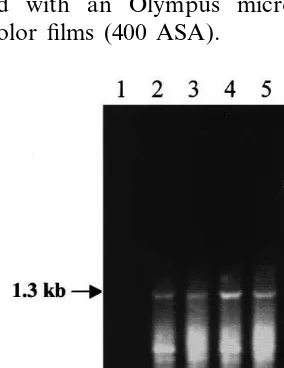Directory UMM :Data Elmu:jurnal:P:PlantScience:PlantScience_Elsevier:Vol157.Issue1.2000:
Teks penuh
Gambar




Dokumen terkait
The putative cellular roles of the transcripts identified by ESTs with strong or nominal homol- ogy with known proteins were assigned by exami- nation of primary BLAST matches
Alignment of the deduced amino acid sequences for these four different partial genomic clones revealed high identities and similarities with other cloned sesquiterpene cyclases,
A cDNA encoding an acyl-ACP desaturase was cloned from cat’s claw, and shown to be 85% identical in amino acid sequence to the castor bean D 9-18:0- ACP desaturase [5]. This
A cDNA corresponding to plastidic glutamine synthetase (GS-2), an enzyme involved in photorespiration, was expressed in antisense orientation under the control of a
Recently, a cDNA microarray technique was used to com- pare the expression of 150 defense-related genes in mechanically wounded Arabidopsis leaves to expression in leaves
Transporter reversal as a mechanism of glutamate release from the ischemic rat cerebral cortex: studies withb. DL-threo- b -benzyloxyaspartate
Deriving the frequency of the spiking ac- tivity in the regular (stationary) regime from inter- spike intervals, for various external inputs, the rate coding properties of our
acid sequence was homologous to the AIF-1s in carp and mammals ) 65.5% sequence identity. The nucleotide sequence of the protein-coding region in the AIF-1 gene was determined to